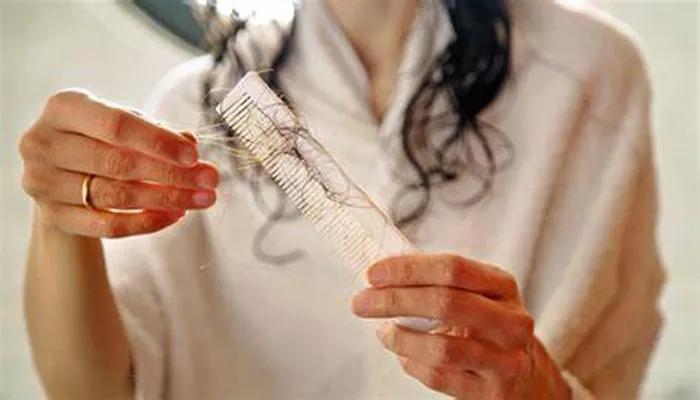Hair loss is a common concern that affects people of all ages and genders. Whether you notice more strands in your brush, on your pillow, or clogging the shower drain, excessive hair shedding can be distressing. The good news is that in many cases, hair loss is treatable or manageable with the right approach. Understanding why your hair is falling out and what steps you can take to address it is the first step toward healthier, stronger hair.
The Science Behind Hair Growth and Shedding
Before diving into solutions, it’s essential to understand how hair grows and why it falls out. Hair growth occurs in cycles, consisting of three main phases:
- Anagen (Growth Phase): This phase lasts between two to seven years, during which hair grows actively.
- Catagen (Transition Phase): A short phase lasting about two weeks, where hair follicles shrink and detach from the blood supply.
- Telogen (Resting Phase): Lasting around three months, this phase ends with the hair falling out naturally, making way for new growth.
On average, losing 50 to 100 hairs per day is normal. However, if you notice significantly more hair loss, it could indicate an underlying issue.
Common Causes of Excessive Hair Loss
Several factors contribute to hair shedding, ranging from temporary triggers to chronic conditions. Identifying the root cause is crucial for effective treatment.
Nutritional Deficiencies
A lack of essential vitamins and minerals can weaken hair follicles, leading to increased shedding. Key nutrients for hair health include:
- Iron: Deficiency is a leading cause of hair loss, especially in women.
- Vitamin D: Low levels are linked to alopecia and thinning hair.
- B Vitamins (Biotin, B12): Vital for keratin production and cell growth.
- Zinc: Supports hair tissue repair and growth.
A balanced diet rich in leafy greens, lean proteins, nuts, and whole grains can help restore hair strength.
Hormonal Imbalances
Hormonal fluctuations play a significant role in hair loss. Conditions such as:
- Postpartum Hair Loss: Many women experience shedding after childbirth due to dropping estrogen levels.
- Thyroid Disorders: Both hypothyroidism and hyperthyroidism can trigger hair thinning.
- Polycystic Ovary Syndrome (PCOS): Excess androgens lead to hair miniaturization and shedding.
Consulting an endocrinologist or dermatologist can help diagnose and manage hormone-related hair loss.
Stress and Emotional Factors
Physical or emotional stress can push hair follicles into the telogen phase prematurely, a condition called telogen effluvium. Common triggers include:
- Severe illness or surgery
- Emotional trauma or prolonged anxiety
- Rapid weight loss or extreme diets
Managing stress through relaxation techniques, exercise, and therapy may help reduce hair shedding over time.
Scalp Conditions and Infections
An unhealthy scalp environment can hinder hair growth. Issues like:
- Seborrheic Dermatitis: A flaky, inflamed scalp that disrupts follicle function.
- Fungal Infections (Tinea Capitis): Causes patchy hair loss and requires antifungal treatment.
- Psoriasis: Leads to thick, scaly patches that may interfere with hair growth.
Using medicated shampoos and seeking dermatological treatment can improve scalp health.
Genetic Factors (Androgenetic Alopecia)
Also known as male or female pattern baldness, this hereditary condition causes gradual thinning due to follicle sensitivity to dihydrotestosterone (DHT). While it can’t be completely reversed, treatments like minoxidil, finasteride, and low-level laser therapy may slow progression.
Effective Strategies to Combat Hair Loss
Once you identify potential causes, implementing targeted solutions can help restore hair health.
Revamp Your Diet for Stronger Hair
Eating nutrient-dense foods supports follicle function. Consider:
- Protein-Rich Foods: Hair is primarily made of keratin, so adequate protein intake is crucial. Include eggs, fish, beans, and lean meats.
- Omega-3 Fatty Acids: Found in salmon, walnuts, and flaxseeds, these reduce inflammation and promote shine.
- Antioxidant-Rich Fruits and Vegetables: Berries, spinach, and sweet potatoes combat oxidative stress that damages follicles.
Supplements may help if dietary intake is insufficient, but always consult a doctor before starting new vitamins.
Adopt a Gentle Hair Care Routine
Harsh styling and products can exacerbate hair loss. Follow these tips:
- Avoid Excessive Heat: Limit blow-drying, straightening, and curling to prevent breakage.
- Use a Wide-Tooth Comb: Detangle wet hair gently to avoid pulling out strands.
- Choose Sulfate-Free Shampoos: Harsh detergents strip natural oils, weakening hair.
- Skip Tight Hairstyles: Ponytails, braids, and extensions can cause traction alopecia over time.
Explore Medical and Natural Treatments
Depending on the cause, various treatments may help:
- Topical Minoxidil: An FDA-approved over-the-counter treatment that stimulates hair growth.
- Prescription Medications: Finasteride (for men) and spironolactone (for women) block DHT effects.
- Platelet-Rich Plasma (PRP) Therapy: Uses the patient’s blood to promote follicle regeneration.
- Essential Oils: Rosemary and peppermint oil have shown promise in boosting circulation to the scalp.
Address Underlying Health Issues
If hair loss persists despite lifestyle changes, medical conditions may be at play. Blood tests can check for:
- Thyroid dysfunction
- Iron deficiency anemia
- Autoimmune disorders (like alopecia areata)
Treating these conditions often leads to hair regrowth.
When to See a Specialist
While some hair shedding is normal, seek professional help if you experience:
- Sudden, patchy hair loss
- Bald spots or receding hairline
- Scalp redness, pain, or severe flaking
- Hair loss accompanied by fatigue or weight changes
A dermatologist or trichologist can perform scalp biopsies, blood tests, or trichoscopies to pinpoint the issue.
Conclusion
Hair regrowth is a slow process, often taking months to show improvement. Combining a healthy lifestyle, proper hair care, and medical interventions when necessary offers the best chance for recovery. Remember, early intervention increases the likelihood of successful treatment, so don’t hesitate to seek help if shedding becomes excessive.
By understanding the causes and taking proactive steps, you can nurture your hair back to vitality and regain confidence in your locks.
Related Topics:
- How to Recover Thinning Hair
- Post-Pregnancy Hair Loss: When It Begins and What to Expect
- When Does Menopause Hair Loss Stop? Understanding the Journey


